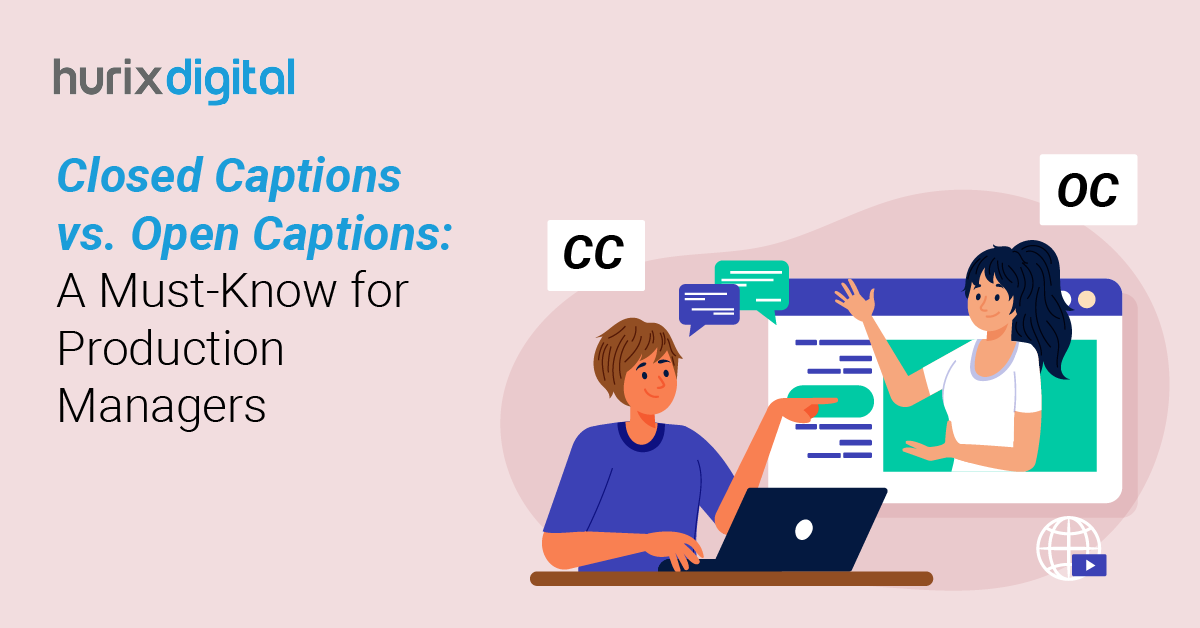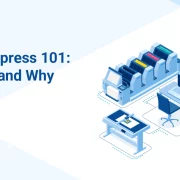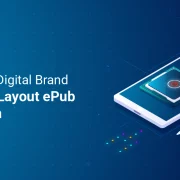Accessibility and the Need for Closed Captioning in Educational Videos
What is closed captioning? Closed captions are in a way an extension of the subtitles that we see in a video; subtitles are a transcription of the spoken dialogue that appears at the bottom of the video. Closed captions go a step further, where the transcription is accompanied by sound effects, music, speaker identification, and other relevant audio and non-speech information accompanying the scene on the screen. These captions are called closed captions because they are not visible till the viewer activates or unlocks them using a remote control or a menu option on the screen. Closed captioning videos give people with hearing disabilities access to your content.
Nearly 5% of the world’s population experience hearing impairment. Access to information is a universal right and closed captions in videos are an inclusive step that goes a long way to ensure that people with hearing disabilities have access to this information. Added to this is the fact that the Americans with Disabilities Act( ADA) of 1990 mandates businesses to ensure access to education for people with disabilities such as vision impairment and hearing loss. Several other countries too have followed suit with similar legislation. And as businesses go global, it is in their interest to ensure the accessibility of content to all people including those with disabilities. Closed captioning is a means to bridge this gap and ensure people with hearing difficulties have access to all types of online content. In this article, we specifically look at how educational institutions can benefit from closed captions in their educational videos. 8 reasons why institutions need closed captioning for educational videos
1. Improves accessibility: The ongoing COVID 19 pandemic has given a major thrust to online education, forcing educational institutions worldwide to conduct their classes online using a range of resources including educational videos. Research has shown that educational videos facilitate learning like no other digital media. Videos tell a story, attract and hold attention, and result in improved learning outcomes. With closed captions, institutions can ensure that all students, including those with hearing disabilities, benefit from the lessons.
However, some educational videos are in the form of games that allow students to interact with the content, learn by trial and error in a safe virtual environment, and take greater control over their learning. Closed captions in educational videos help students with hearing disabilities to interpret the content in more or less the same way as those without hearing disabilities. Thus, closed captioning in educational videos improves accessibility.
2. Aids foreign students: In an interconnected world, educational institutions can expand their reach beyond the physical boundaries of their campuses and across countries. A significant portion of the audience across geographical locations can be non-native speakers. By close captioning the educational videos you can engage with the learners who are learning English as a second language or are completely unfamiliar with the language.
3. It is mandated by law: The Americans with Disabilities Act and Section 504 of the Rehabilitation Act have mandated captioning on educational videos for students, as well as the general public, to ensure effective communication for people with hearing disabilities. There are several other countries that are following similar practices. Institutions intending to set up their campuses in such countries would have to comply with the accessibility laws. Also, with accessibility gaining ground, closed captioning of educational videos is one such means to achieve the end.
4. Improves clarity for all students: The benefits of closed captions are not just limited to students with hearing disabilities. These captions enable students to better understand and focus on educational videos. For instance, they help to clarify what is being said in scenarios where the speaker has an accent, technical terms are used, the audio is muffled, or there is some noise in the background. All these issues would distract the students’ concentration. Closed captioning of educational videos helps to overcome all such hurdles for students.
5. Helps students with learning disabilities: A study conducted in 2014 showed that only 17% of young adults with learning disabilities had found support in postsecondary education to overcome the issue. With the increased use of educational videos in learning, closed captions are a simple but effective technique to help students with difficulties in processing speech and auditory components in the videos.
6. Improves reading and comprehension: A study conducted by researchers Greg McCall and Carmen Craig showed that captioned educational videos helped to improve student’s reading and comprehension scores dramatically as compared to the uncaptioned ones. Another study by Planet Read also found that captioning on TV in India greatly helped to increase the literacy rate in children.
7. Improves retention: Closed captions are eye-catching and it has been observed that even those students who can follow the audio in the video tend to read alongside. This combination of the audio and the visual creates an immersive learning environment resulting in greater retention and focus.
8. Closed captions improve search across platforms: Institutions can use their educational videos as libraries. When videos are not captioned, students have to scroll through the entire database to find what they are looking for. With closed captioning, the textual content of your educational videos opens up opportunities for keyword-based and concept-based search, thus, greatly simplifying students’ search for relevant videos. Captioned videos are more SEO-friendly so the more you optimize them, the more likely your learners will find the content organically.
Also read, reasons to consider web accessibility solutions. In conclusion Over the last decade, we have witnessed a gradual increase in the use of digital media technologies in education. These technologies make courses more engaging, immersive, entertaining and contextual. Educational institutes that have introduced these new practices in their classrooms have reported marked improvement in students’ performance and engagement with the lessons. Educational videos have emerged as the most popular and useful medium to engage students with the lessons. Closed captioning of these videos can help institutions to make their content accessible and provide equal opportunity to learning to all, including students with hearing and learning disabilities.
Now that we have highlighted why closed captioning of educational videos is important, you may wish to add them to your media. The process can be time-consuming and hard, especially if you don’t have inhouse skills. You can hire a trusted transcription services provider like Hurix for all your closed captioning requirements and achieve all the above-stated benefits.
Need to know more about our Products & Services? Drop us a note at marketing@hurix.com.





